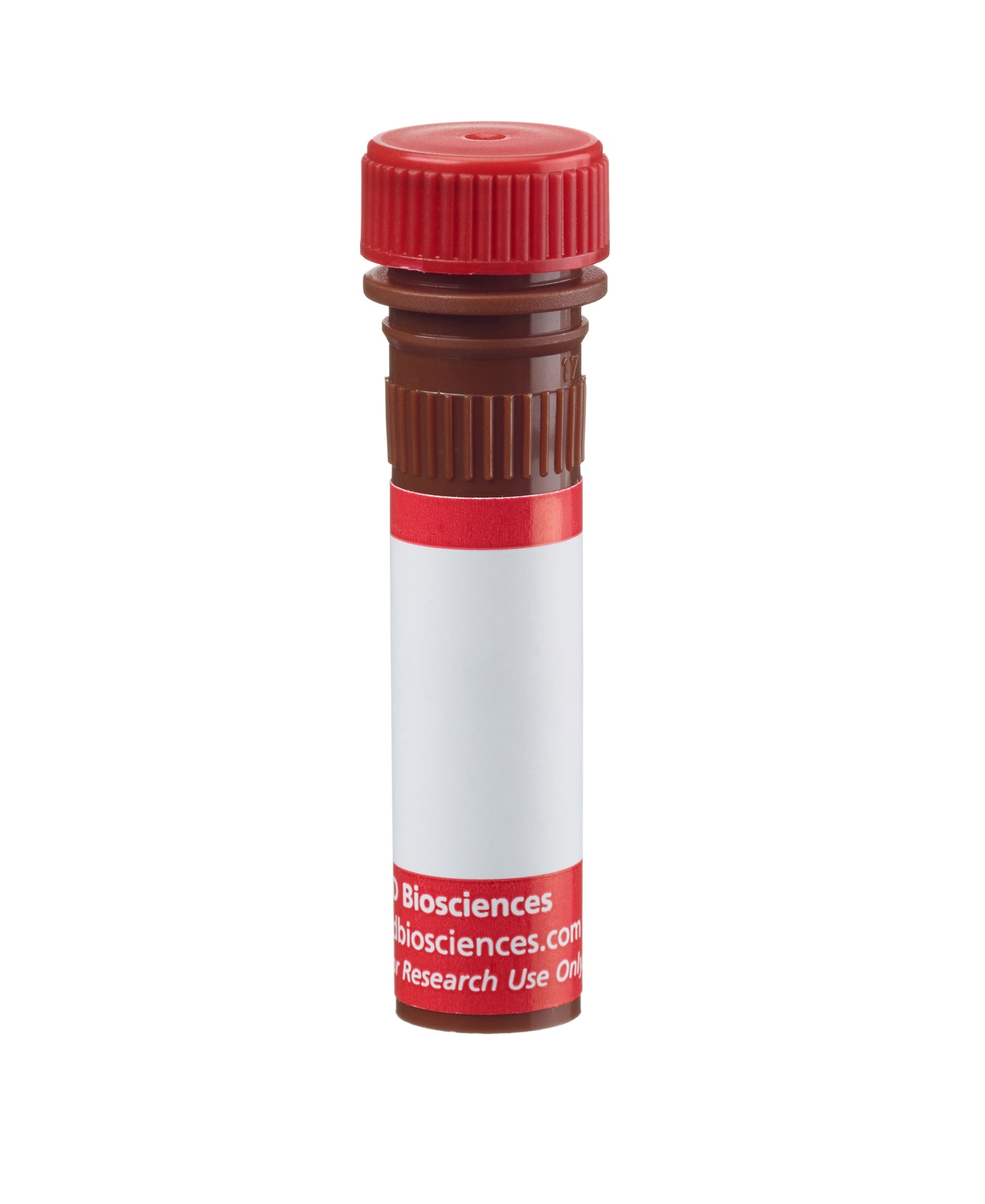Old Browser
This page has been recently translated and is available in French now.
Looks like you're visiting us from {countryName}.
Would you like to stay on the current country site or be switched to your country?




Flow cytometric analysis of CD68 expression on human peripheral blood monocytes. Human peripheral blood mononuclear cells were fixed and permeabilized with BD Cytofix/Cytoperm™ Fixation/Permeabilization Solution (Cat. No. 554722). After washing with BD Perm/Wash™ Buffer (Cat. No. 554723), the cells were stained with either Alexa Fluor® 647 Mouse Anti-Human CD68 antibody (Cat. No. 562111; solid line histogram) or with an Alexa Fluor® 647 Mouse IgG2b, κ Isotype Control (Cat. No. 557903; dashed line histogram). The fluorescence histograms were derived from events with the forward and side light-scatter characteristics of intact monocytes. Flow cytometry was performed using a BD™ LSR II Flow Cytometer System.


BD Pharmingen™ Alexa Fluor® 647 Mouse Anti-Human CD68

Regulatory Status Legend
Any use of products other than the permitted use without the express written authorization of Becton, Dickinson and Company is strictly prohibited.
Preparation And Storage
Product Notices
- This reagent has been pre-diluted for use at the recommended Volume per Test. We typically use 1 × 10^6 cells in a 100-µl experimental sample (a test).
- Please refer to www.bdbiosciences.com/us/s/resources for technical protocols.
- An isotype control should be used at the same concentration as the antibody of interest.
- Source of all serum proteins is from USDA inspected abattoirs located in the United States.
- The Alexa Fluor®, Pacific Blue™, and Cascade Blue® dye antibody conjugates in this product are sold under license from Molecular Probes, Inc. for research use only, excluding use in combination with microarrays, or as analyte specific reagents. The Alexa Fluor® dyes (except for Alexa Fluor® 430), Pacific Blue™ dye, and Cascade Blue® dye are covered by pending and issued patents.
- Alexa Fluor® is a registered trademark of Molecular Probes, Inc., Eugene, OR.
- Alexa Fluor® 647 fluorochrome emission is collected at the same instrument settings as for allophycocyanin (APC).
- Caution: Sodium azide yields highly toxic hydrazoic acid under acidic conditions. Dilute azide compounds in running water before discarding to avoid accumulation of potentially explosive deposits in plumbing.
- For fluorochrome spectra and suitable instrument settings, please refer to our Multicolor Flow Cytometry web page at www.bdbiosciences.com/colors.
Companion Products




The Y1/82A monoclonal antibody specifically binds to CD68 which is also known as, Scavenger receptor class D member 1 (SCARD1), Macrosialin, or GP110. CD68 is a cell surface 110 kDa-type I-transmembrane glycoprotein that is primarily expressed in cytoplasmic granules of monocytes, macrophages, dendritic cells, granulocytes, myeloid progenitor cells and, reportedly, a subset of CD34-positive hemopoietic bone marrow progenitor cells. CD68 belongs to the sialomucin family and serves as a scavenger receptor that can bind and internalize oxidized low density lipoproteins (LDL). This antibody is useful in studies of myeloid cell development and function.
Development References (4)
-
Barclay NA, Brown MH, Birkeland ML, et al, ed. The Leukocyte Antigen FactsBook. San Diego, CA: Academic Press; 1997.
-
Davey FR, Cordell JL, Erber WN, Pulford KA, Gatter KC, Mason DY. Monoclonal antibody (Y1/82A) with specificity towards peripheral blood monocytes and tissue macrophages. J Clin Pathol. 1988; 41(7):753-758. (Clone-specific: Immunohistochemistry). View Reference
-
Davey FR, Erber WN, Gatter KC, Mason DY. The use of monoclonal antibody Y1/82A in the identification of acute myeloblastic and monocytic leukemias. Am J Clin Pathol. 1988; 89(1):76-80. (Clone-specific: Immunohistochemistry). View Reference
-
Kishimoto T. Tadamitsu Kishimoto .. et al., ed. Leucocyte typing VI : white cell differentiation antigens : proceedings of the sixth international workshop and conference held in Kobe, Japan, 10-14 November 1996. New York: Garland Pub.; 1997.
Please refer to Support Documents for Quality Certificates
Global - Refer to manufacturer's instructions for use and related User Manuals and Technical data sheets before using this products as described
Comparisons, where applicable, are made against older BD Technology, manual methods or are general performance claims. Comparisons are not made against non-BD technologies, unless otherwise noted.
For Research Use Only. Not for use in diagnostic or therapeutic procedures.
Report a Site Issue
This form is intended to help us improve our website experience. For other support, please visit our Contact Us page.